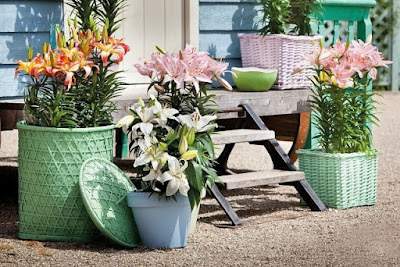 |
| Onion crop - http://media2.intoday.in/indiatoday/ |
Culinary onions, are amongst the most consumed, as well as one of the most popular for garden and allotment production, vegetables around. Yet despite their all-year-round availability in the supermarkets, their crispness and flavour will always come a poor second when compared to a quality home produced onion. And if you think that growing onions isn't your thing then think again as they are very simple to grow from seed.
 |
| Red and White - http://www.oniongardening.com/ |
Of course you have the choice of growing onions from onion sets and while these too are easy to produce a crop from your choice of cultivars are somewhat limited. Furthermore, seed grown onions are known to perform better, are less prone to disease, store better, and bulb up faster than those grown from sets. So, to grow what you like, how you like, and to a highest quality, then the way forward is to grow onions from seed.
You can direct sow onion seeds directly into a prepared seed bed outside. However the further north you are the shorter the growing season and so you may choose to get a head start and make the most of the available growing season by starting off your onion seeds indoors a couple of months before the expected last frost.
 |
| Onion harvest - http://www.pesches.com/ |
Irrespective of which technique you choose, you would be wise to prepare your onion bed in the previous autumn or winter. Onions will require a sunny position in a well-drained, light, friable loam enriched with a couple of buckets or well-rotted farm manure or garden compost per square yard. On heavy or clay soils, double dig the soil, adding plenty of coarse sand, grit, moss peat. Remove any stones you come across.
Sprinkle 5 oz of carbonate of lime per square yard. and to finish apply a top dressing of general purpose granular fertilizer at a rate of 4 oz per square yard.
Avoid growing onions on freshly manured soil, and particularly wet ground, try growing onions in a raised bed. Prior to sowing, rake over the surface to create a fine tilth.
How to direct sow onion seeds
 |
| Onion seedlings - http://www.vegetable-garden-guide.com/ |
Direct sow onions outdoors anytime from mid-February to the end of March provided the soil surface is is dry and friable.
Sow the seeds thinly at a depth of 1cm (½"), and a distance of 30cm (12") between rows. It will help to draw a straight line in the soil about 2 cm deep and then cover once sown. Water the soil if it is not already damp.
When large enough to handle, thin onion seedlings to 10cm (4") apart for medium sized bulbs. Water freely during dry spells but not once the bulb start to ripen.
Remove any weeds at the earliest stage possible to reduce competition for nutrients and to avoid damaging the roots of nearby onions.
How to start onion seeds off indoors
 |
| Onion seedlings - http://tastytravels-holly.blogspot.co.uk/ |
Sow onion seed indoors in module seed trays using a good quality free-draining, seed compost at a depth of 1cm (½"). Place the tray in a heated propagator or seal inside a plastic bag at a temperature of 10-15C (50-59F). You can expect germination to occur within 10-14 days.
Once germinated, remove the tray from the propagator or polythene bag and grow on in cool conditions. When all risk of frost has passed and once the onion seedlings are large enough, plant outside in to their prepared bed at a distance of 10cm (4") apart. It is advisable to provide a protective netting or fleece while the new plants establish as they will be at risk of attack from birds and insects. This can be removed once they have become established. Water the plants thoroughly after planting.
For related articles click onto the following links:
HOW TO GROW AUTUMN ONION SETS
HOW TO GROW ONIONS FROM SEED



















































